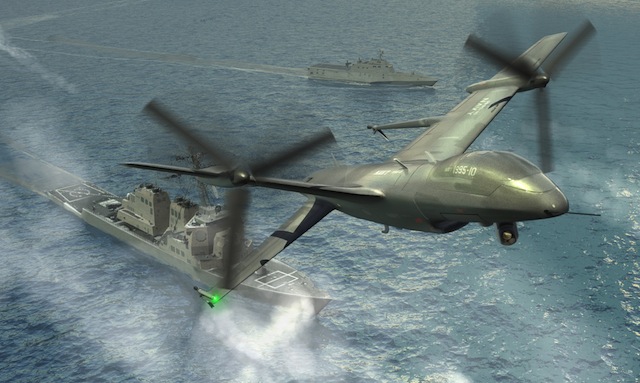AeroVironment and Northrop Grumman will compete to build a Predator-sized unmanned air system (UAS) that can be launched and recovered from a naval patrol vessel, the Defense Advanced Research Projects Agency (DARPA) has announced.
The Tern – a name originally assigned as an acronym for “tactically exploited reconnaissance node” – has no immediate customer lined up, but that’s not DARPA’s goal.
The agency responsible for introducing stealth technology is seeking to deliver a new breakthrough in the UAS market. If either the Northrop or AeroVironment designs prove successful, the Tern will deliver a new level of basing flexibility for a medium-sized UAS that can roam hundreds of miles on missions lasting several hours.
That level of capability has been reserved exclusively to land-based aircraft, such as the General Atomics Aeronautical Systems Predator or Israel Aerospace Systems Heron.
The Phase 2 contracts awarded by DARPA on 23 March narrow the Tern competition to AeroVironment and Northrop, excluding previous bidders including Aurora Flight Sciences, Carter Aviation Technologies and Maritime Applied Physics.
Both contractors will work on preliminary design and risk reduction during Phase 2.
A follow-on award will select a single bidder to build a full-scale Tern demonstrator for ground-based testing under Phase 3 of the programme, DARPA says.

The agency suggests the ground-based testing “would lead” eventually to a full-scale, at-sea demonstration of a prototype vehicle on a destroyer-sized vessel.
DARPA has restricted the bidding teams from revealing most details about their aircraft proposals.
The agency has released an image of an artist’s concept for a notional Tern vehicle. It reveals a tail-sitter, twin-engined design resembling a Predator with a sharply dihedral mid-wing and the Predator’s familiar anhedral stabilisers. The vehicle is shown equipped with a visual sensor.
A dedicated launch and recovery system for the Tern UAS is not visible on either vessel shown in the image. A tail-sitter Tern is shown perched however on the aft helicopter deck of the destroyer, suggesting no catapults or nets are required to launch and retrieve the aircraft.
Source: FlightGlobal.com


























